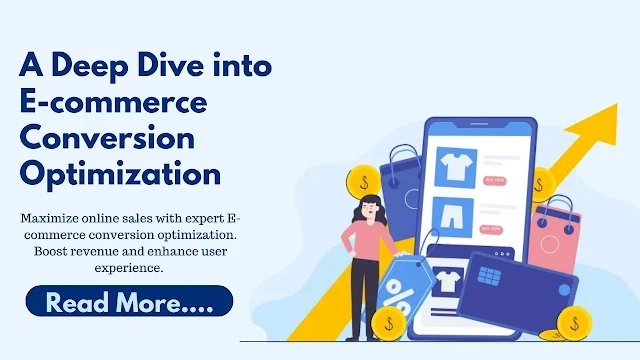A Deep Dive into E-commerce Conversion Optimization
A Deep Dive into E-commerce Conversion Optimization
Decoding E-commerce Conversion Optimization
Definition and Significance
To get started, it's crucial to grasp the core concept of E-commerce Conversion Optimization.This process revolves around fine-tuning your online store to increase the number of visitors who actually make a purchase. The importance of this lies in its direct connection to making more money without having to spend more on advertising.
Why Does E-commerce Conversion Optimization Matter?
Crafting a Seamless User Experience
Responsive and Intuitive Design
At the heart of making more sales online is having a website that really grabs users' attention and guides them smoothly. This means using a design that works well on all sorts of devices so that everyone has a smooth experience.
Navigation and User Journey Optimization
Help your visitors navigate through a well-organized website. Make sure the way they move around is optimized, placing important buttons and categories in just the right spots. When users have a clear and focused path, it makes a big difference in how many of them end up making a purchase.
Harnessing the Power of Persuasion*
Craft compelling product descriptions and visually appealing images. Every element should guide the visitor toward making a purchase decision. Integrate the focus keyphrase "E-commerce Conversion Optimization" naturally into your product descriptions for enhanced SEO.
Streamlining the Checkout Process
Simplifying the Path to Purchase
If the checkout process is too complicated, people might leave without buying anything, leaving behind abandoned shopping carts. To avoid this, simplify the steps they need to take, reduce the number of form fields they have to fill out, and make sure the whole transaction process is clear and easy to understand.
Emphasizing Security and Trust*
Make your customers feel secure and confident by drawing attention to the fact that you use secure payment gateways and have transparent policies. Including trust badges on your site can be especially reassuring, helping to ease any concerns they might have about the safety and reliability of their transactions.
The Role of Multiple Payment Options*
Tools for E-commerce Conversion Optimization
Google Analytics
Harness the power of Google Analytics to obtain valuable insights into how users behave on your website. Utilize this tool to keep tabs on pages that attract a lot of traffic, dissect the way users navigate through your site, and pinpoint areas that could benefit from enhancement. By leveraging Google Analytics, you equip yourself with a comprehensive understanding of your users' interactions, empowering you to make informed decisions for optimizing their experience and ultimately boosting your conversion rates.
Heatmaps and User Session Recordings
Explore tools such as Crazy Egg or Hotjar, which go beyond numbers and statistics, providing visual representations of how users interact with your website. These tools generate heatmaps and session recordings that offer a dynamic, visual insight into user engagement. By interpreting these visuals, you can uncover actionable insights, understanding not just where users click but also how they navigate and engage with your content.
Conversion Rate Optimization (CRO) Software
Content Marketing Strategies
Blogging for E-commerce Success*
Consistently sharing blog posts that delve into topics relevant to your products or industry not only keeps your website content fresh but also contributes significantly to enhancing its visibility in search engines through improved SEO. As you embark on this content creation journey, consider strategically weaving in the focus keyphrase "E-commerce Conversion Optimization" within your blog articles.
The Power of Video Content*
FAQs
1. What is the average conversion rate for e-commerce websites?
The average conversion rate hovers around 2-3%, though this can vary by industry. Effective E-commerce Conversion Optimization can substantially improve this benchmark.
2. How often should A/B testing be performed?
Regular A/B testing is crucial, especially during significant website updates. Continuous testing helps identify trends and ensures your strategies stay aligned with user preferences.
3. Can E-commerce Conversion Optimization benefit small businesses?
Absolutely. Small businesses can often experience more significant improvements in conversion rates with targeted optimization efforts. Focusing on user experience and trust-building is particularly impactful for smaller enterprises.
Conclusion
In the ever-evolving landscape of e-commerce, mastering the art of conversion optimization is not just an advantage but a necessity. By implementing the strategies discussed in this comprehensive guide and leveraging powerful tools, you can transform your online store into a high-converting platform. Remember, the journey to optimal conversion rates is ongoing. Regularly analyze, refine, and adapt to stay ahead in the competitive e-commerce arena.
By strategically integrating the focus keyphrase "E-commerce Conversion Optimization" throughout this blog post, we aim to enhance its SEO visibility and provide valuable insights for businesses seeking to elevate their online sales through effective conversion optimization strategies...




Comments
Post a Comment